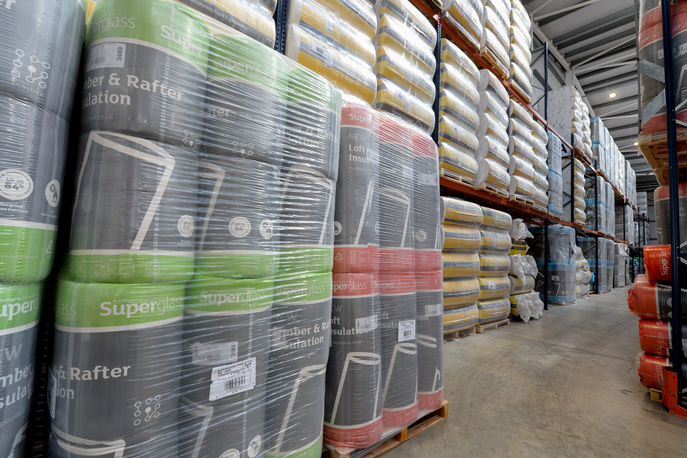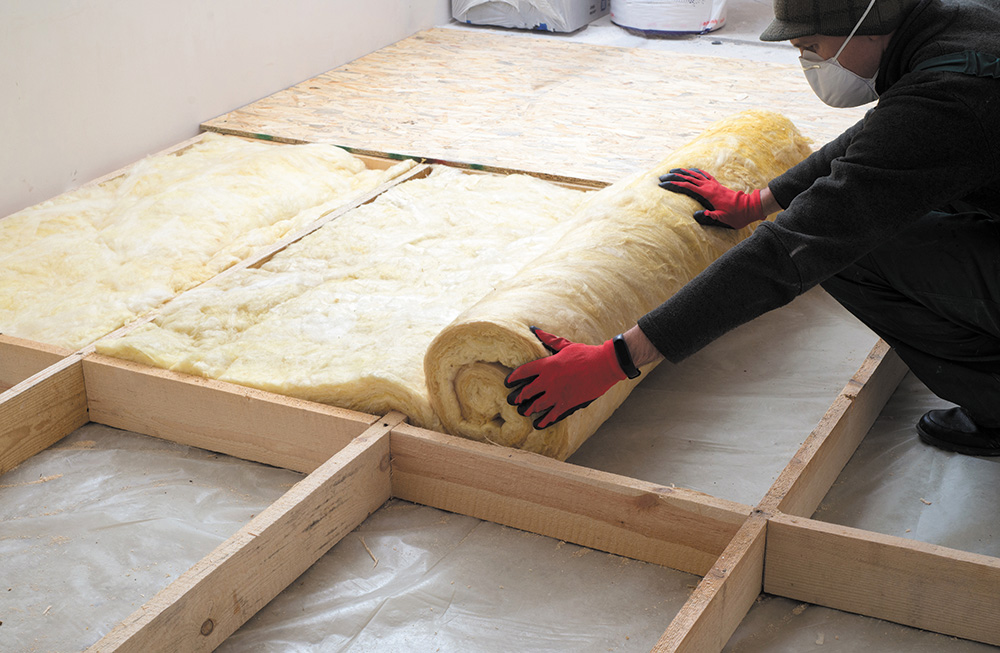
Why have Loft Insulation?
Published on January 9, 2023
Posted in Inspiration
by MKM
4 min read
With energy prices higher than ever, it’s even more important to make sure heat from a home isn’t being wasted. And with up to a third of the heat from a typical uninsulated house escaping through the roof, loft insulation is one of the most effective ways to save energy and save money on your energy bills.
Why loft insulation?
In cold weather, if you wear a woolly hat on your head you instantly feel warmer – and loft insulation works the same way for a home. Hot air naturally rises so putting insulation above it stops it escaping, keeping it in the home, making room temperatures much more comfortable and meaning less money needs to be spent on heating.
In fact, it can make quite a significant saving on energy bills. Insulation specialist Superglass reckon homeowners can save around 20% on their energy bills, while the Energy Saving Trust estimates insulating an uninsulated loft with 270mm of loft insulation could save up to £590 a year depending on the type of property, and reduce CO2 emissions by up to 1000kg!
Where to insulate.
In most lofts you can opt for cold roof or warm roof solutions, the difference being where the insulation is applied.
A cold roof installation means putting the insulation between the joists (the horizontal beams that make up the floor of the loft), while a warm roof has the insulation placed between the rafters (the sloping timbers that make up the roof itself).
A cold roof is easier to lay, but if the loft needs to be boarded for storage the floor may need to be raised to make sure the insulation is deep enough (the recommended depth is 270mm); it also means the space above will be colder, so pipes and water tanks will also need insulating to stop them freezing. As the term suggests, a warm roof keeps the roof space warmer so there are no worries about pipes freezing, but the insulation is more time-consuming and trickier to install.

Choosing the right insulation.
There are many different types of insulation, but the most common – and the one we’d recommend for lofts – is glass mineral wool. One of the reasons is that it has many other properties apart from just thermal insulation.
For example, it’s also a very effective acoustic insulation, reducing noise in and between properties to make the living environment more comfortable; it offers excellent fire protection, being classed as non-combustible; and environmentally it’s an exceptionally sustainable option. UK manufacturer Superglass uses up to 84% recycled glass in its insulation products – glass which might otherwise be sent to landfill – and estimates that typically their products will save over 300 times the energy used in their manufacture and transport. Glass mineral wool also makes economic sense, as it’s ‘made to measure’, with easy installation and very little waste.
Different products for different applications.
At MKM we stock a wide range of Superglass insulation products specifically for lofts, with different products depending on the type of application and the thermal performance required. Essentially, they split into products for ceiling level and rafter level.
Ceiling level
These products offer the most cost-effective insulation solution, whether it’s for a new loft, refurbishment or a loft conversion. The products available offer various levels of thermal performance with thicknesses from 100 to 200mm and R-Values up to 5, and include Handy Pack 44, Contract mat 44, Multi-Roll 40 and Multi-Roll 44.
You can also use loft blown wool – ideal where conventional rolls can’t be easily installed, it provides up to 500mm of insulation but needs installing by a professional contractor. For this option, we recommend Superglass Superwhite 42.
Rafter level
Allowing the maximum use of roof space, these insulation products fit snugly between the rafters to make installation from below simple. Superglass rafter level insulation is available in a range of thermal efficiencies, and as a flexible Timber & Rafter Roll or rigid Timber & Rafter Batt.

Easy installation.
When installing any insulation, it’s important to make sure the loft is dry and clean. The insulation will make your roof space cooler, so is likely to make and damp and condensation problems even worse unless you increase ventilation.
For a cold roof installation, the first layer should be laid between the joists, with another layer laid at right angles to cover the joists and make the insulation up to the required depth. If the loft is to be boarded, use purpose-built plastic legs to support the boards without compressing the insulation – otherwise its insulation value will be reduced. Superglass products are easy to cut and install, with the flexible rolls perforated at common widths for easier handling, a snug fit and minimal waste.

For a warm roof, the insulation should be friction-fitted between the rafters – both the Superglass Timber & rafter Rolls and Batts are pre-cut to allow easy installation between common stud spacings, with minimum on-site cutting and waste.
For further advice on choosing and fitting loft insulation, and full details of the Superglass range of products, simply visit your local MKM branch.